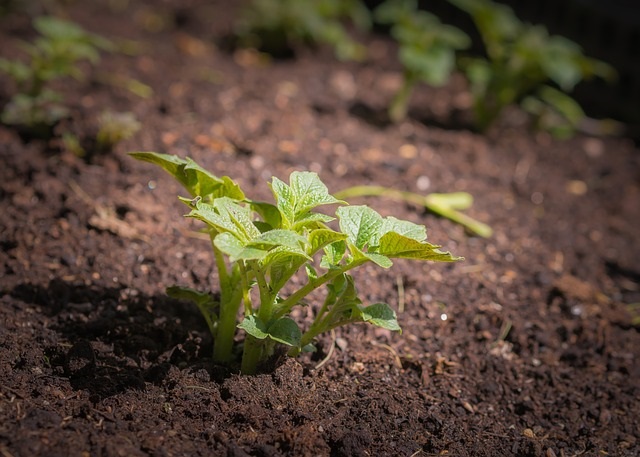Potatoes: Potato Blight Update late May 2020
25 May 2020Potato blight (P. infestans)
Population update
The trend for new, highly aggressive genotypes to quickly spread across Europe, displacing less aggressive strains, has continued. The P. infestans genotypes 13_A2 and 6_A1 that in the 2000s led to a considerable tightening up of blight control measures, e.g. shorter average spray intervals, are now being displaced in some European countries by 36_A2 and 37_A2. Both 36_A2 and 37_A2 are highly aggressive, and 37_A2 has reduced sensitivity to fluazinam.
Genotype 36_A2
In 2019, the first year 36_A2 was detected in Scotland, this genotype was quite widespread. It is very likely that it will be prevalent in 2020. To date, there is some direct evidence, and quite a lot of circumstantial evidence, that this genotype is more difficult to control than others, e.g. 13_A2. To protect crops during periods of high-risk weather, especially where risk continues for 3 or more days, it is advised that a shorter spray interval, e.g. one of 5 or 6 days, is used at these times. Alternatively, make sure that the most effective fungicides, or combinations, are used to cover periods of high-risk weather.
Genotype 37_A2 and reduced sensitivity to fluazinam
Advice on the use of fluazinam in Scotland, where 37_A2 has been detected for 2 years, is straight forward, i.e. don’t use fluazinam for blight control.
Fungicide choice for tuber protection is limited because in the absence of fluazinam only two modes of action for highly effective tuber blight control remain available, i.e. fluopicolide, or cyazofamid/ amisulbrom (both QiIs). For crops with a longer growing season, these modes of action need to be used sparingly, if at all, prior to stable canopy to ensure that they are available later in the season to protect the tubers as effectively as possible.
The use of fluazinam to control Sclerotinia in potatoes is more likely to unwittingly apply selection pressure for 37_A2. If fluazinam must be used for Sclerotinia then applications should be minimal and in mixture with full rate of an alternative product with a different and highly effective mode of action for the control of late blight.
Fluazinam will have already been applied as a soil treatment to control powdery scab in some seed crops (EAMU). Where the fluazinam soil treatment has been used then foliar sprays of fluazinam to the same crop are not permitted.
Two guidance documents explaining how the potato industry should respond to reduced fluazinam sensitivity in late blight populations are available on the AHDB Potatoes website.
Blight risk
Check the AHDB Potatoes Fight against Blight website regularly for the most up-to-date information on the appearance of confirmed blight outbreaks. Also, check BlightWatch or BlightCAST for the general blight-weather risk where your crops are located.
Experience suggests that the threat of blight in one season is not a good predictor of the risk in the following. The data for 10 recent years suggest no obvious link between the number of outbreaks one year and the next. It’s important to bear in mind that the current highly aggressive genotypes of P. infestans can multiply very quickly from an initially low level of inoculum, given favourable weather conditions of course.
If there is prolonged low-risk weather during part of the coming season, then to save fungicide cost it is better to 1) maintain shorter intervals but use fungicide products that are a bit less effective than 2) extend intervals.
High-risk weather is a key risk factor but not the only one. High risk is one Hutton Period or more, active blight in the area or a crop grown from seed that has, or is thought to have tuber blight.
Seed tuber-borne blight
Blight can spread onto the haulm from either visible or invisible lesions on seed tubers, crucially in the absence of conventional high-risk weather periods. The impact of such transmission on crop health can be minimised by starting the fungicide programme at emergence and ensuring it is robust, especially from emergence to the end of rapid canopy.
Blight control early in the growing season
Bear in mind that plant resistance is lowest when the plants are small (low, single-digit, number of leaves per stem). Resistance increases with growth stage because upper leaves are more resistant. Match the efficacy of sprays prior to rapid canopy development to the magnitude of the inoculum threat. There are many fungicides suitable for this phase of growth. Check with your agronomist or agricultural advisor which is best for your situation.
Blight control during rapid canopy
Protecting crops against blight during rapid canopy development is more difficult if 1) crops are planted late (not an issue in 2020) and 2) temperatures are high during this phase of growth because very rapid growth of the haulm stretches fungicide protection.
Fungicide timing and curative activity
For the fungicidal control of blight, the timing of application in relation to high-risk weather influences efficacy. Protectant fungicides give better protection if they are applied a day or two before a high-risk period. Curative fungicides prevent more early infections from developing into lesions if applied shortly after a high–risk period. If the target spray day is on the first or second day of a high-risk weather period, then it’s essential to use a fungicide with curative activity. Within this timescale, the greater the delay between the high-risk period and curative application, the greater curative efficacy required from the fungicide.
Sign up to the FAS newsletter
Receive updates on news, events and publications from Scotland’s Farm Advisory Service

